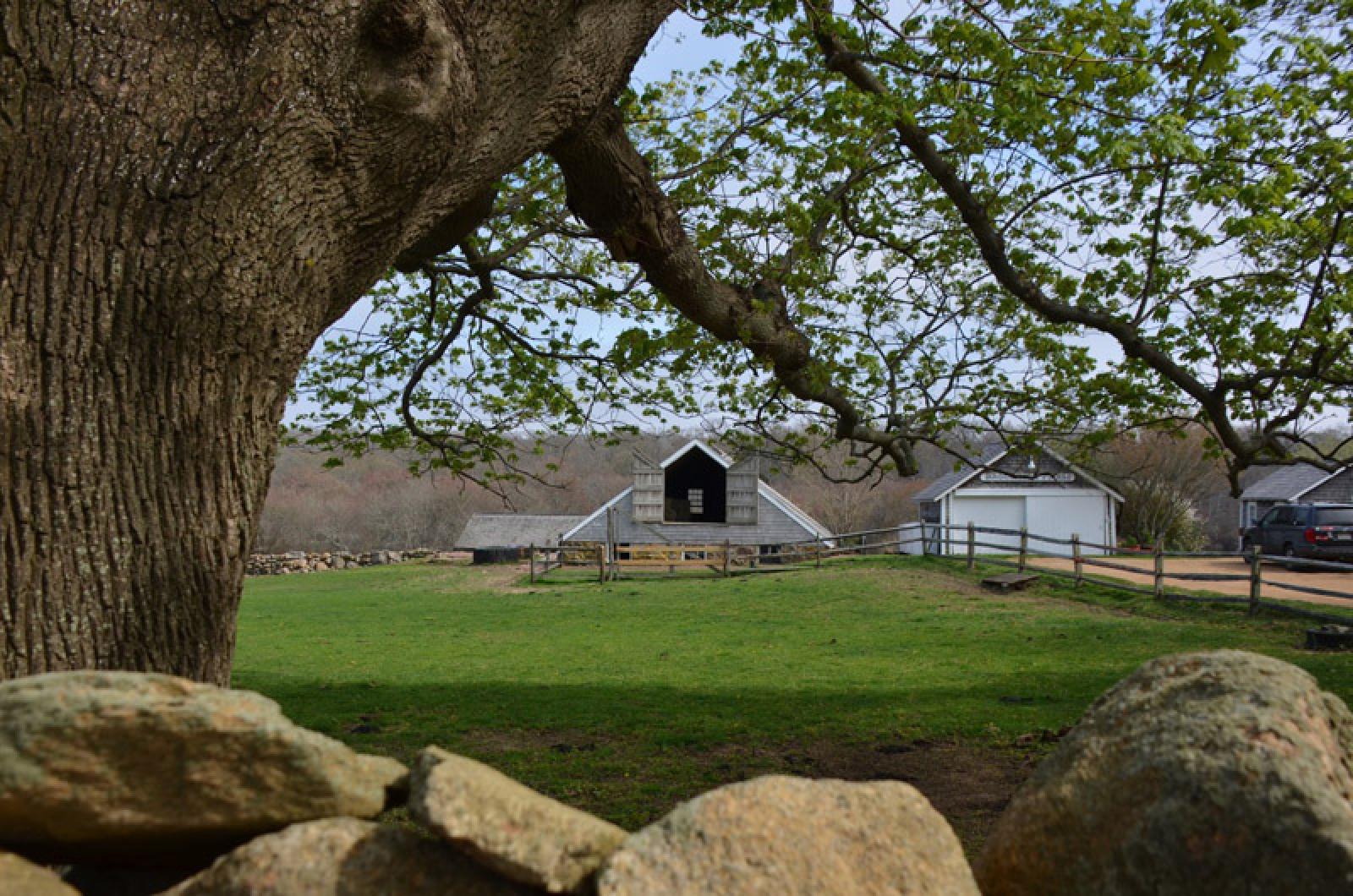My favorite road on the Island is Middle Road. I love its hills and its lovely views. Most of the old farmhouses are still visible from the road, and most remain as they were many years ago. I am sometimes homesick for the hills and valleys of my own western Pennsylvania birthplace and a drive on Middle Road can restore my equilibrium. What I love the most is the view from Brookside Farm. It is so satisfyingly pastoral: The Devon cattle fenced in by stone walls, the shimmer of Glimmerglass Pond, the old farmhouse and barns. The whole scene could have been designed by Capability Brown and painted by Constable. It is a healing and heartening scene.
But I am pretty sure that I do not love this place as much as Anna Allen Davis Norton Maxson once did.
Anna was born in 1897, the daughter of William C. Allen and Sarah Hammett Allen of North Road in Chilmark. She had several brothers and sisters, one of whom was Joseph Chase Allen, the author of Tales and Trails of Martha’s Vineyard and the Wheelhouse Loafer and longtime Gazette reporter. Anna’s father was almost 15 years older than her mother, and in 1922 when Anna married Orlin F. Davis, a widower whose wife had died in 1906 and who was the owner of Brookside Farm, she was following that pattern. She was 26 and he was 59. They lived on his farm, where Orlin was a dairy farmer. He used oxen to plow his fields and the current owners keep the Devon cattle as an homage to that memory. Before he became a dairy farmer, Orlin was a horse trader at a time horses were an important part of Vineyard farming life. He and Anna had 25 years together on the farm, and in his will Orlin left her almost everything. Before his death, he had already made sure the house and main part of the farm would be hers. He died on Christmas day in 1947 at the age of 84 in the house where he was born. Interestingly enough, the Davis farm in its very early history belonged to Sylvannus Allen, one of Anna’s ancestors.
Anna remained a widow for six years. In 1953 she married Arthur A. Norton, another widower who sold all his property in Edgartown, where his own family had lived for generations, to join Anna at the farm. They had only six years together before Arthur died. Like Orlin, Arthur had been a successful dairy farmer. He made Anna a rich woman when he died in 1959.
But things did not change much at the farm. In 1965 she sold 30 acres of it to Stanley Murphy. This was just after she had married for the third and last time. Her last husband was Irving Maxson, who unlike Orlin or Arthur, was not a native Islander. He had been the General Motors manager and agent for New England almost from the beginning of that fabled company, and before that he worked for the Stanley automotive company. Irving too came to the farm and remained there until he was hospitalized in his final illness at the age of 98. According to his obituary, he was a fascinating storyteller. I imagine that Anna was also. Irving was a well-off man himself and not interested in Anna’s money, nor she in his. They had a pre-nuptual agreement according to Anna’s will, written before Irving died.
Anna survived Irving by only two years. She died in 1980 at the age of 83. Her obituary stated that she had a “memorable personality.” She was highly regarded for her practical advice and Yankee ways. I have seen pictures of her as a young woman, and she was very attractive, not beautiful in the classical sense, but with bright, intelligent eyes and a zest that overshadows the conventionally-posed picture. Her happy nature shines though. I think it is that nature that made her live her life in the way she did. Events in her life might lead one to suspect ulterior motives in her advantageous marriages, but I don’t think she was a gold-digger in any sense of the word. She made those she loved happy.
Her will is a revelation of her life and one of the most interesting that I have read in a career spent examining probate records. She was scrupulously fair in returning to Arthur’s heirs the antiques and money that she had inherited from him. She enumerated and described them all. She remembered her own relatives according to the degree of either their needs or her affection for them. She remembered Orlin’s family and her friends. She must have been a truly extraordinary person. She had no children, and her beloved Brookside Farm, where she had lived for 58 years was sold upon her death. The couple who bought it had not planned to buy a house on the Vineyard just yet, but they made an offer immediately after seeing it. They own and love it still and have preserved its calming and healing prospect for us all.
It is people like Anna that I try to find to write these Back Stories. Without them, the houses are just shells. Sometimes they are beautiful shells and sometimes they are old and abandoned, and sometimes quirky — but to make them memorable they need inhabitants who come alive. These people don’t need to be so-called Vineyard characters; there are plenty of stories about them. They just need to be real people with a story behind them and a house in front of them.
Mary Jane Carpenter is a retired title examiner who lives in Edgartown.




Comments (9)
Comments
Comment policy »